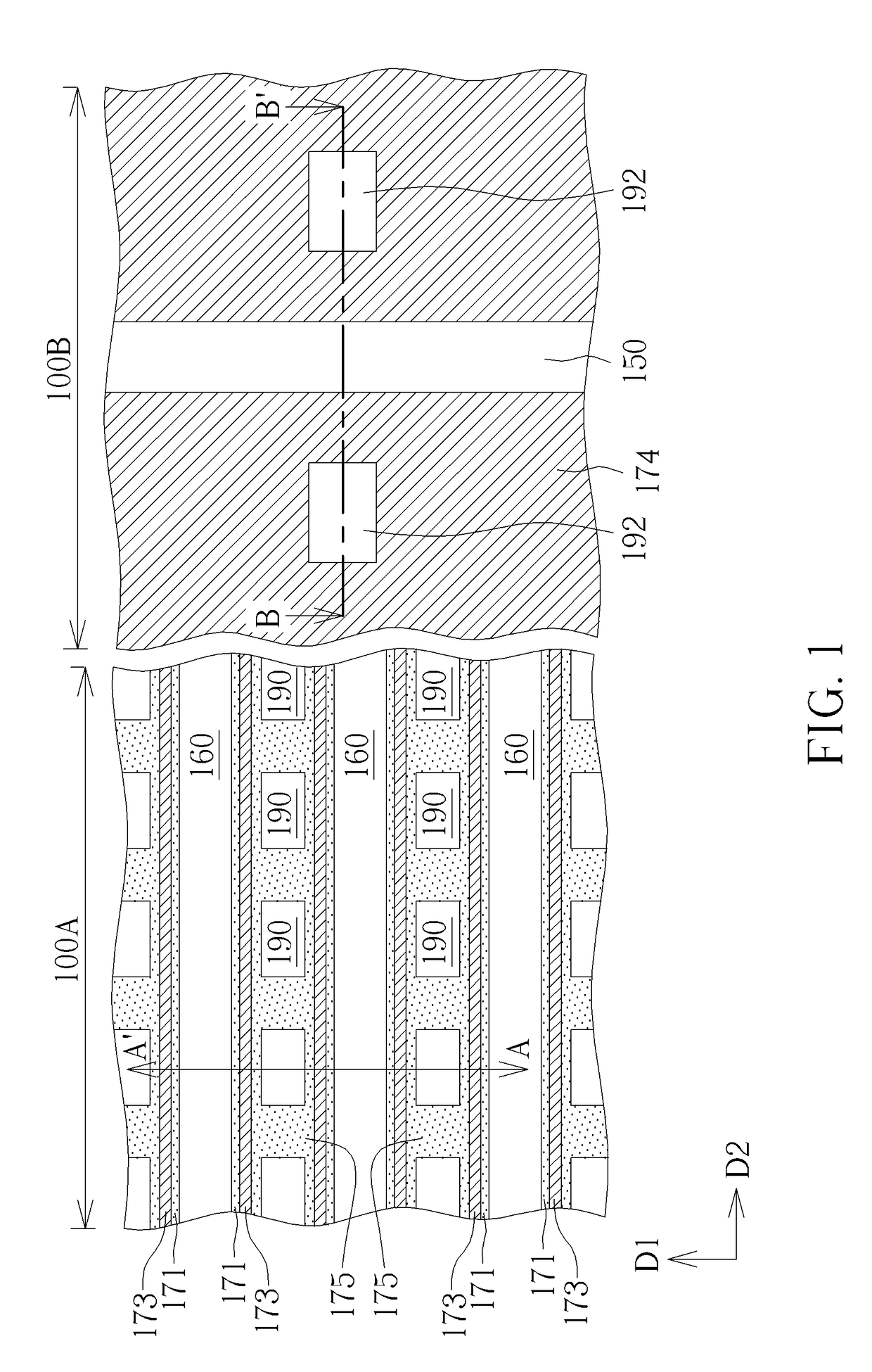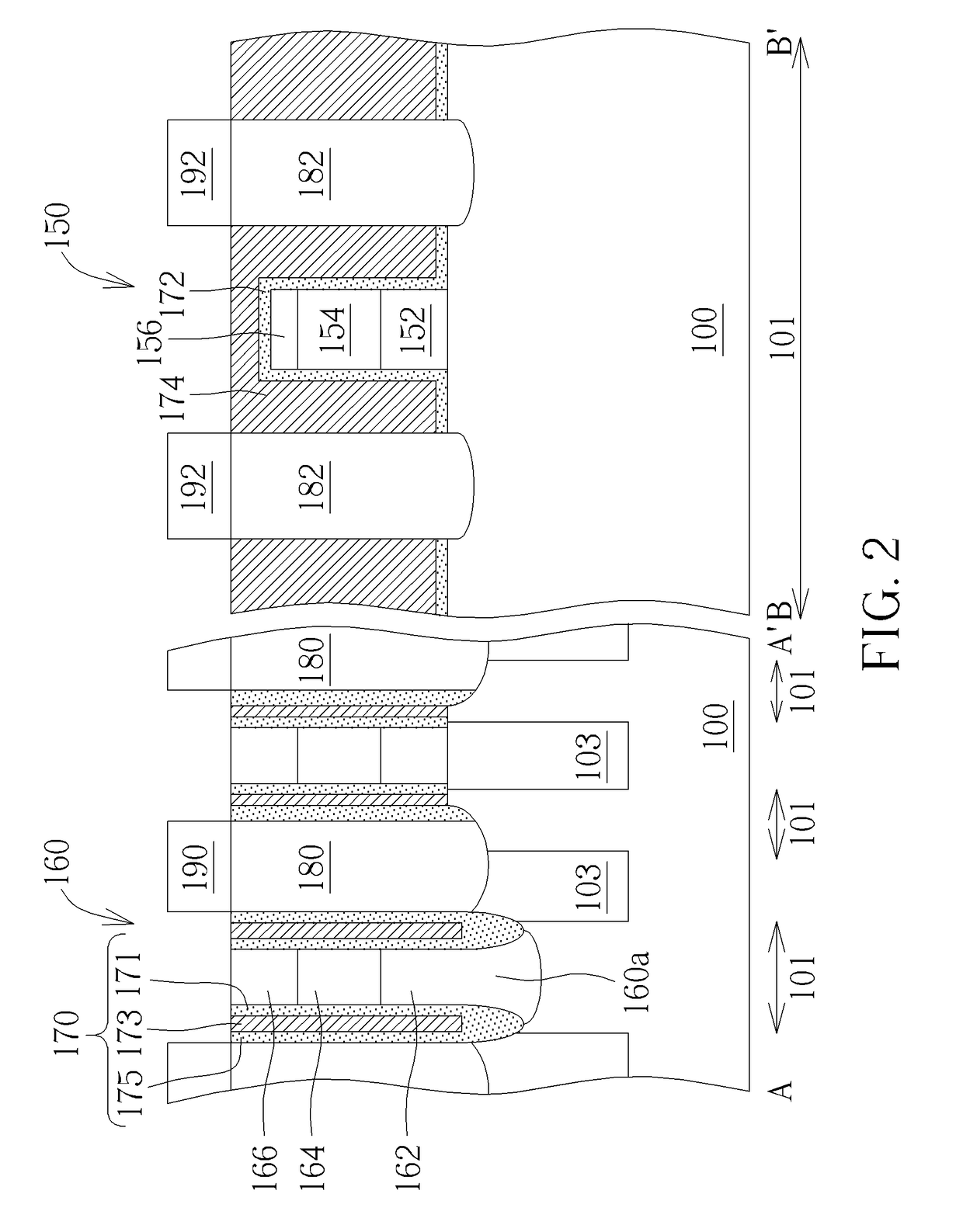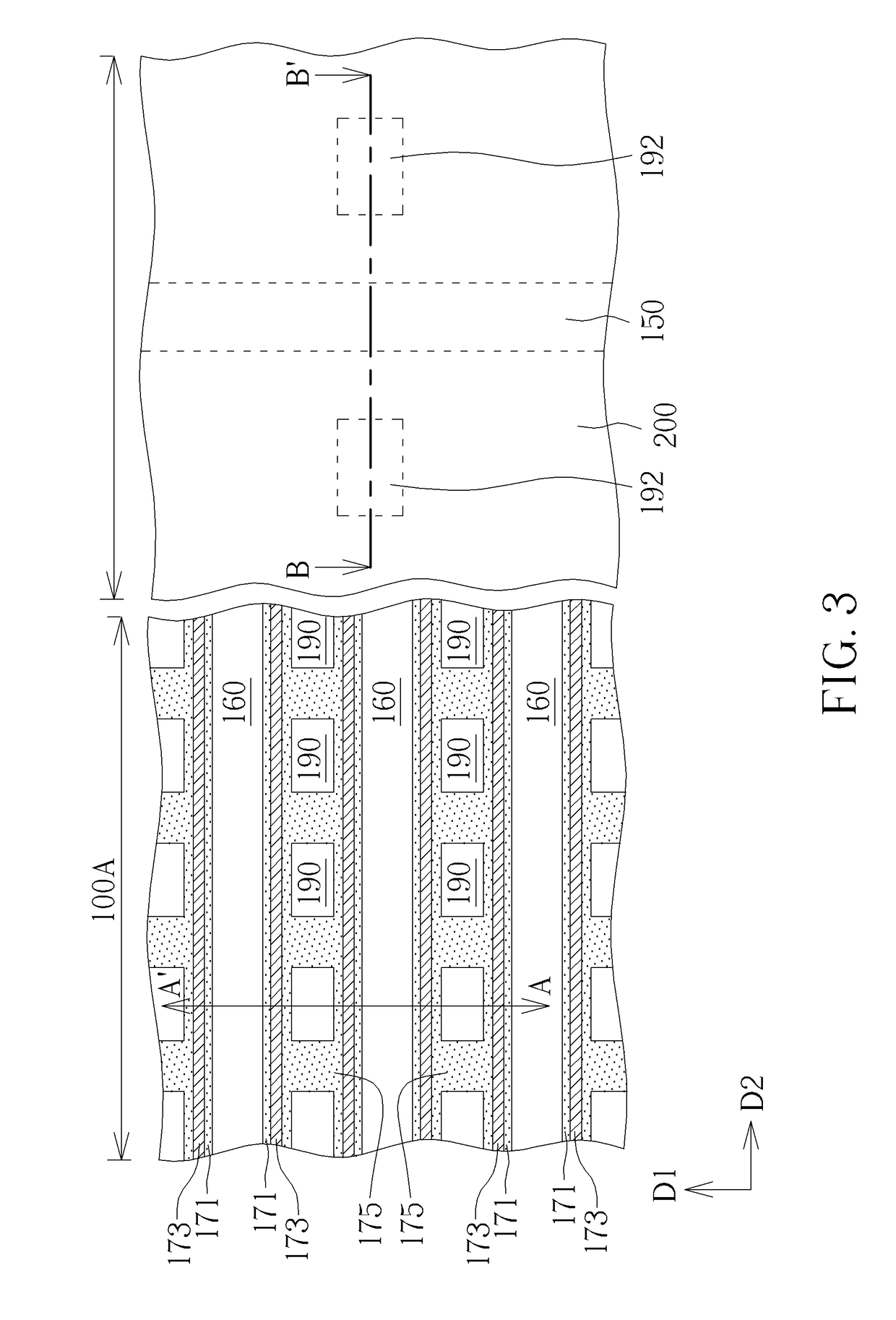Method of forming semiconductor memory device
a technology of memory device and semiconductor, which is applied in the direction of semiconductor devices, digital storage, instruments, etc., can solve the problems of increasing rc delay and achieving poor efficiency, and many defects are formed in the dram cell with the buried gate, so as to improve the effect of rc delay
- Summary
- Abstract
- Description
- Claims
- Application Information
AI Technical Summary
Benefits of technology
Problems solved by technology
Method used
Image
Examples
Embodiment Construction
[0017]To provide a better understanding of the presented invention, preferred embodiments will be described in detail. The preferred embodiments of the present invention are illustrated in the accompanying drawings with numbered elements.
[0018]Please refer to FIG. 1 to FIG. 8, which are schematic diagrams illustrating a forming process of a semiconductor memory device according to the preferred embodiment of the present invention, in which FIG. 1, FIG. 3, FIG. 5 and FIG. 7 show a top view of a semiconductor memory device during different forming steps respectively, and others show a cross-sectional view of a semiconductor memory device during different forming steps respectively.
[0019]The semiconductor memory device of the present embodiment for example includes a dynamic random access memory (DRAM) device, and which includes at least one transistor (not shown in the drawings) and at least one capacitor (not shown in the drawings) , thereto serve as the smallest unit in the DRAM arr...
PUM
 Login to View More
Login to View More Abstract
Description
Claims
Application Information
 Login to View More
Login to View More - R&D
- Intellectual Property
- Life Sciences
- Materials
- Tech Scout
- Unparalleled Data Quality
- Higher Quality Content
- 60% Fewer Hallucinations
Browse by: Latest US Patents, China's latest patents, Technical Efficacy Thesaurus, Application Domain, Technology Topic, Popular Technical Reports.
© 2025 PatSnap. All rights reserved.Legal|Privacy policy|Modern Slavery Act Transparency Statement|Sitemap|About US| Contact US: help@patsnap.com



